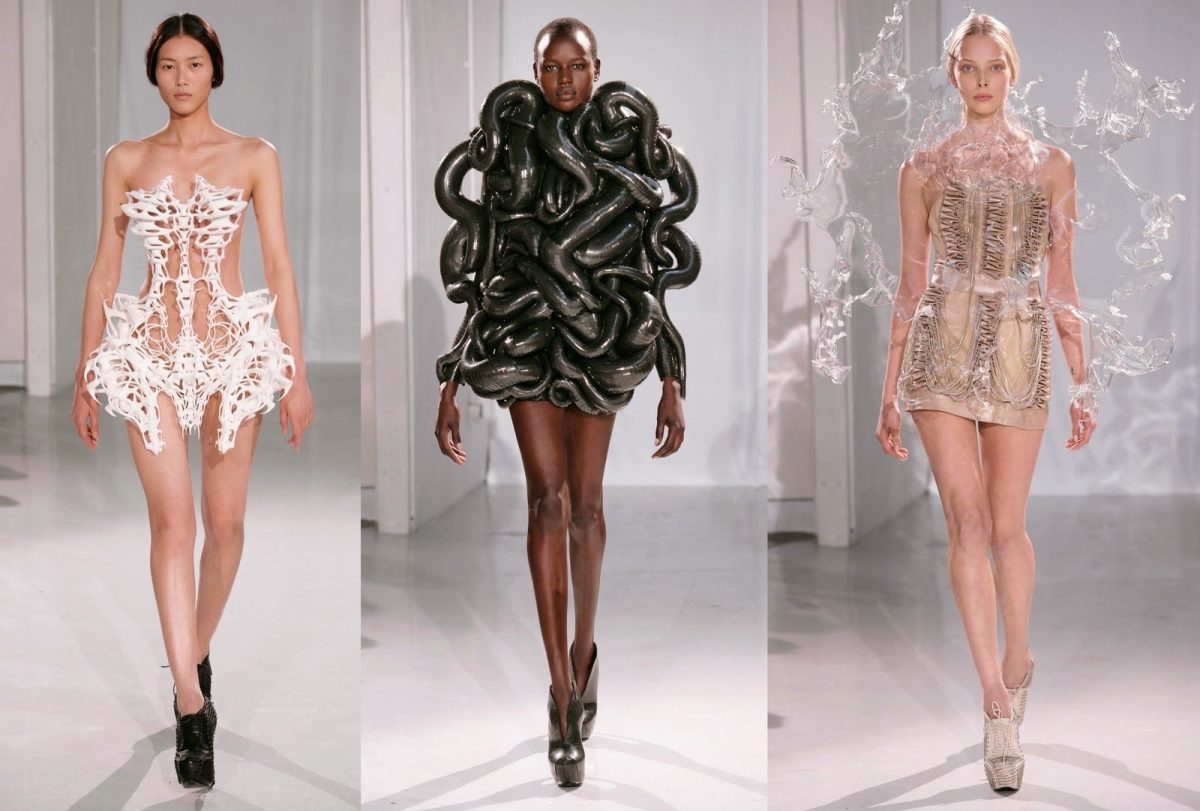Since its emergence in 2010, 3D-printed fashion has come a long way. It is an effective way to reduce fashion waste, a leading cause of pollution. It could also help make clothing more accessible to all.
The first 3D-printed clothing was made of hard plastic (PLA) and was extremely uncomfortable. The 2010 Crystallization Top, by Iris van Herpen, is credited with being the first 3D-printed fashion item and was made from transparent resin. While it was a groundbreaking innovation, the nature of the resin meant that the wearer could not sit down in the garment.
However, in 2015, yet another breakthrough was reached. Danit Peleg, an Israeli fashion student, released a collection that was entirely 3D printed using a material called FilaFlex. Filaflex is a softer and more flexible alternative than its predecessor. The designs created with this material resemble a sort of plastic or silicone chainmail, whose multi-piece compositions allow for much more movement than was previously possible.
Most notably, Variant 3D developed a technology called Loop. With this technology, clothes can be made using cotton and polyester filaments, just like regular fabric. Loop allows for 2D, 3D, and knit-level file dimensions. Countless products can be made with this technology, from t-shirts to shoes to home decor.
At this point, it is fair to say that 3-D-printed clothing is making a rapid rise in the fashion world. But why is that? Once fully developed, 3D printing allows for exact, personalized measurements in record time. Moreover, 3D-printed garments are 0 waste because anything made in a 3D printer can be recycled back into filaments. One 3D-printed T-shirt can be recycled into a pair of socks, shorts, or even shoes.
As far as accessibility goes, 3D-printed clothes are an invaluable resource. Currently, 3D printing is not at the forefront of the fashion industry. This means that finding designers, printers, and resources is a costly and tedious process. All is not lost, however. As the technology continues to be developed, costs will be lowered. Furthermore, the recyclability and personalized nature of printed garments mean that excess inventory costs and waste can be reduced to nearly zero. The fashion industry is responsible for 10% of the world’s carbon emissions—something 3D-printed fashion can help change.
3D-printed fashion may have a long way to go, but it holds immense potential. In the past 15 years, 3D-printed fashion has come a long way, from stiff geometric cages to soft cotton fabric. Sometime soon, the necessary technology will become more accessible, allowing people of all financial statuses to be able to afford clothing. 3D-printed fashion is constantly being developed and will eventually be able to provide personalized, eco-friendly attire to an extensive range of people.









